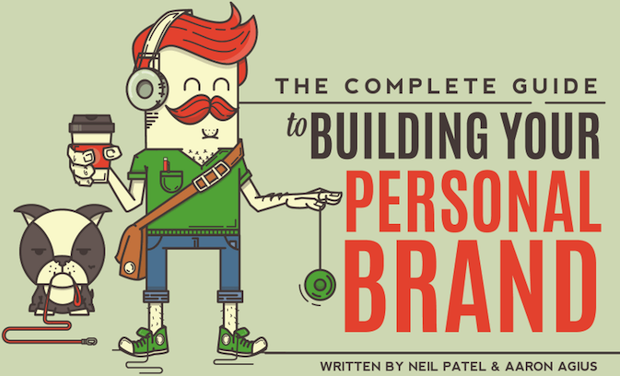 Image via Hypebot
Image via Hypebot
This article originally appeared on Hypebot.
Neil Patel freely shares his "Complete Guide to Building Your Personal Brand," which mixes notions of business image and personal identity in a manner that's quite relevant to musicians. Though some musicians would prefer to take a haphazardly organic approach to brand building that just leaves it up to others to decide who you are, building your brand doesn't have to be a superficial process. Patel advocates the perspective that "your personal brand is what separates you from everyone else in the world."
In a tradtional marketing industry sense, a "brand" is the "name, term, design, symbol, or any other feature that identifies one seller's product distinct from those of other sellers." I assume this goes back to things like branding cattle with one's mark, and is the reason brands are often associated with logos and trademarks.
The term brand has expanded to include the public image of a company or an individual. Such an image is a holistic take on how a company or individual is viewed. While you can't ultimately control that view, you can establish a clear picture of who you are and what you stand for as a solid base for promoting your musical identity and conducting your behavior.
From Neil Patel's "Complete Guide To Building Your Personal Brand" (via @Buzzsonic):
8 Steps To Building Your Personal Music Brand
1. Create your personal brand vision
"The first step to creating your personal brand is to organize your thoughts and create your personal brand vision. This is the way you want yourself to be perceived by others and also how you want to live your professional and personal life."2. Define your target audience
"Defining a target audience is a best practice for anyone that needs others to give them something. It might be a salary, an investment or money in exchange for a product or service. Whenever you need something from someone you go through at least some of the steps in defining a target audience."3. Build up your online and offline assets
"Assets are the things you own that will communicate your brand message to your target audience. Assets are things like your own website and blog, but they can also be things like your Twitter username and your LinkedIn profile. Offline assets are things like business cards and or traditional newsletters that you send out."4. Build your brand through outreach
"Outreach is the act of providing value to those that have established audiences filled with the people you want to reach. You provide value and in exchange they give you the chance to sell yourself to the audience."5. Get free press coverage
"Getting press coverage can establish you as an authority in your industry. You can get access to audiences full of the people that can hire you as an employee, partner and vendor. Getting free press coverage as an individual can be a challenge, but it can be done and be done effectively leading to the opportunities you seek as you work to grow your personal brand profile."6. Connect with mentors
"A mentor is someone that can provide guidance and friendship for your life. They might have experience in the exact life path you want to pursue, but that quality is not a requirement. Often, the best mentors are simply good listeners, educators and friends."7. Monitor your brand
Patel shares tools and discusses ways to monitor your brand online. Remember that if you're going to work so hard on your brand, you should also work to find out what people are saying and, ideally, thinking which goes beyond the immediate feedback people are willing to give you.8. Be yourself
Patel brings things full circle with the reminder that though you are making conscious choices about presenting yourself in public. It may sometimes require you to change your behavior or appearance, but it should still be based in what makes you uniquely you.Hypebot Senior Contributor Clyde Smith (@fluxresearch) also blogs at DanceLand.







